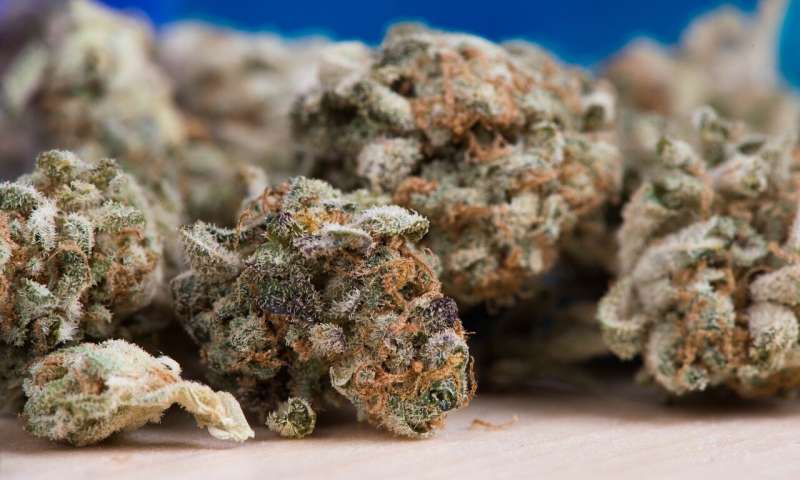Marijuana detected in homicide victims nearly doubles

Researchers at Columbia University Mailman School of Public Health assessed the time trends in alcohol and marijuana detected in homicide victims and found that the prevalence of marijuana almost doubled, increasing from 22 percent in 2004 to 42 percent in 2016. Alternately, the prevalence of alcohol declined slightly from 40 percent in 2004 to 35 percent in 2016. The findings are published in Injury Epidemiology.
“Despite the growing body of evidence linking alcohol and marijuana to homicide victimization, until now there was little information about the contemporary trends in the prevalence of alcohol and marijuana among homicide victims in the United States,” said Guohua Li, MD, DrPH, professor of Epidemiology at Columbia Mailman School.
The researchers analyzed toxicological data for homicide victims from the 2004-2016 National Violent Death Reporting System (NVDRS), a population-based surveillance system for violent deaths occurring in the U.S. and administered by the Centers for Disease Control and Prevention. The study sample included homicide victims in 9 states that have been participating in the NVDRS since 2004: Colorado, Georgia, Massachusetts, New Jersey, Oregon, Rhode Island, South Carolina, Virginia, and Wisconsin. The NVDRS recorded a total of 30,433 homicide victims in the 9 states, of which there were 12,638 homicide victims aged 15 years and older with toxicological testing results available for analysis.
Of the 12,638 homicide victims, 37.5 percent tested positive for alcohol, 31 percent were positive for marijuana, and 11 percent were positive for both substances.
The results also showed that male victims were more likely than female victims to test positive for alcohol, marijuana, and both substances. Over two-thirds of adolescent victims aged 15-20 years in 2016 tested positive for marijuana. “We observed marked increases in the prevalence of marijuana in both sexes and across age and racial groups,” said Li, who is also a professor of anesthesiology at Columbia University Vagelos College of Physicians and Surgeons.
As of June 2019, 34 states and the District of Columba have legalized marijuana for medical use; of them, 11 states and the District of Columbia have also legalized recreational marijuana for adults aged 21 years and older.
Source: Read Full Article



